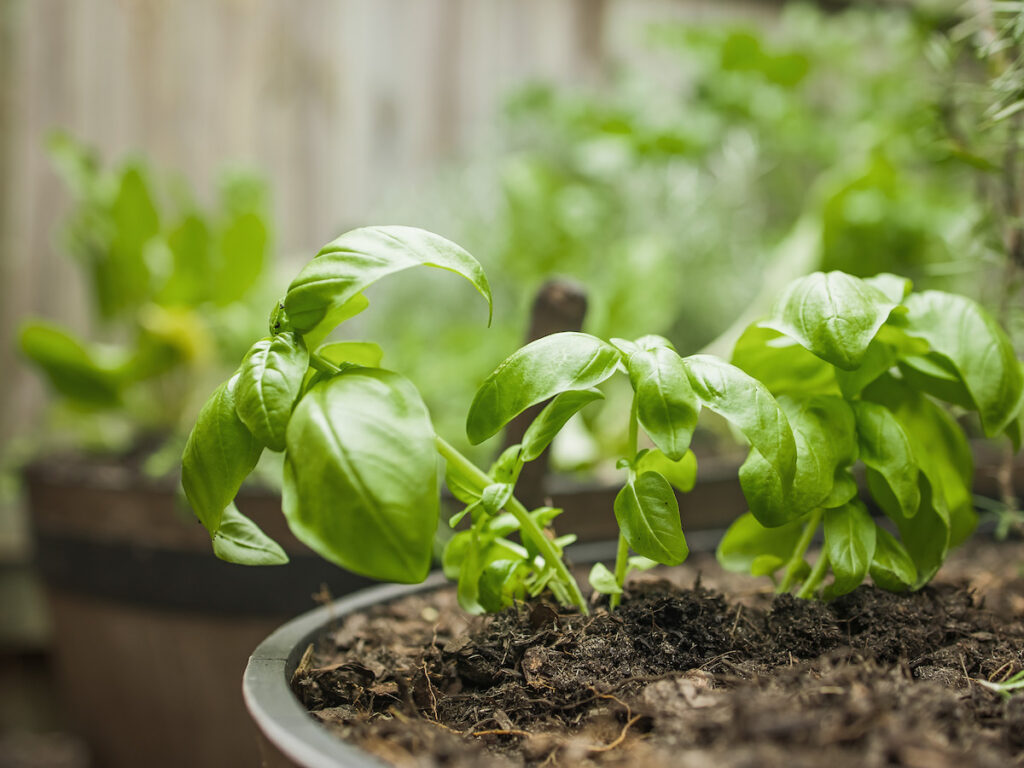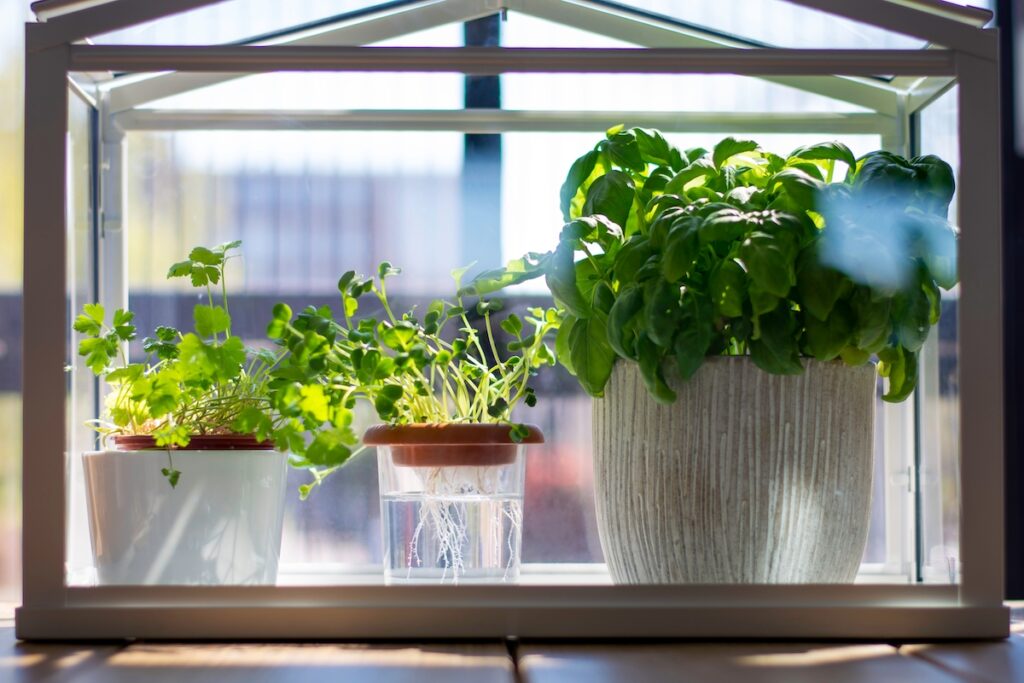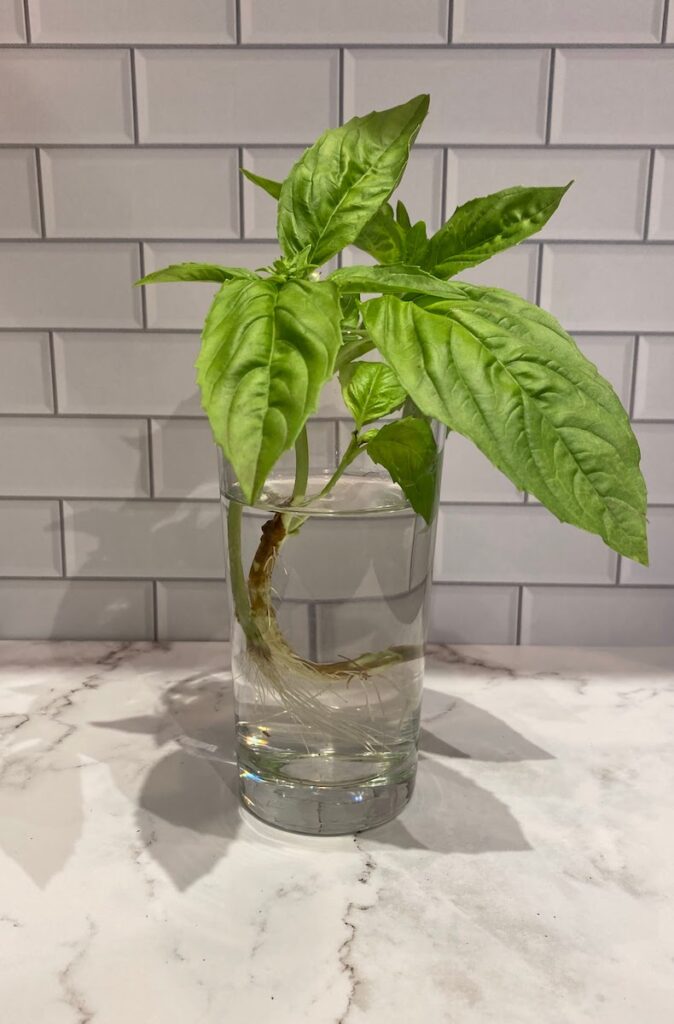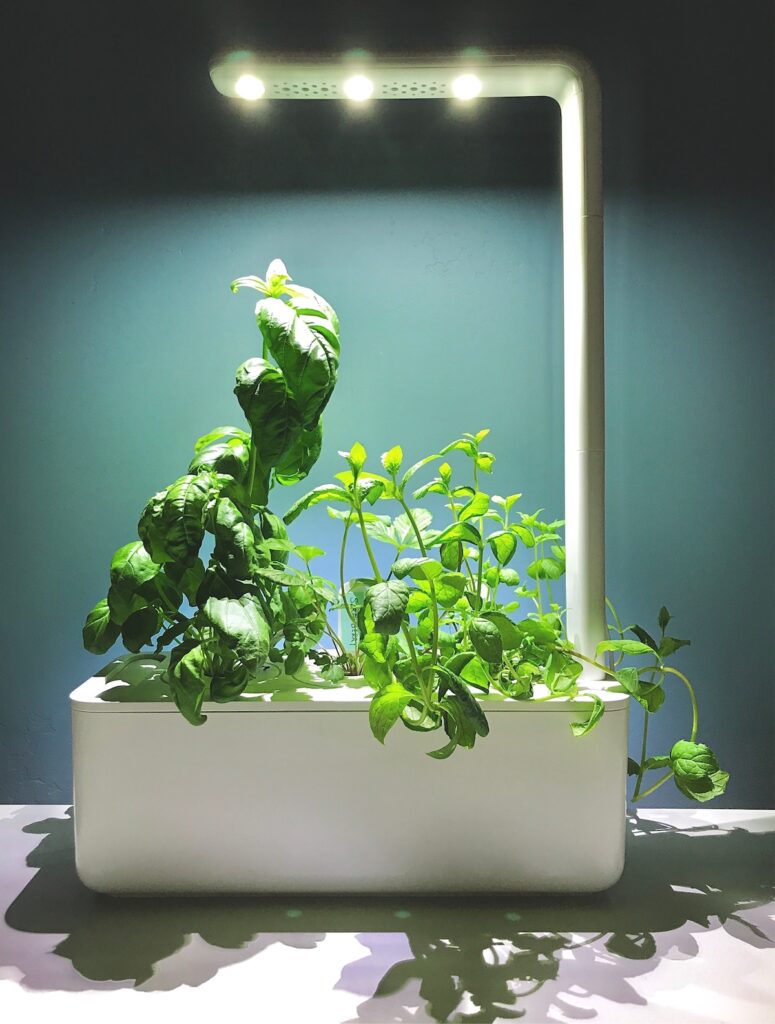As an Amazon Associate I earn from qualifying purchases. This website also participates in other affiliate programs and may earn commissions if you shop through the links used on this website.
(This article was originally published on July 15, 2022 and was last updated on September 4, 2022)
Wondering whether basil can survive winter outdoors (probably not). Or ready to start growing basil in the winter, indoors? This guide will help you get started.
Whether a friend shared a cutting from their basil plant, or you’re trying to figure out what to do with your own basil plants so you can harvest fresh herbs throughout the winter, preserving basil for winter is on most basil gardeners’ minds as summer turns to fall, and the evenings get a bit chillier.

Will Basil Die Over the Winter Months?
Depending on where you live, your basil plant will most likely die over the winter. Basil is a tender annual herb that thrives in warm weather, and dies in cold temperatures. If you live somewhere where winter temperatures don’t drop below 50 degrees F, it’s possible you can keep growing your basil plant outdoors in this “cold weather.” However, anyone living somewhere where temperatures dip below 50 degrees F will need to take steps to protect and preserve their basil plants and enjoy their fresh flavor over the winter – or accept that they’ll flower, go to seed (which you can collect), and then die.
Basil Temperature Tolerance
Basil is a warm weather herb that grows best in temperatures between 70 and 85 degrees Fahrenheit, with an abundance of direct sunshine, and is killed by frost.
If the temperature falls below 50 degrees, basil may experience stunted growth and reduced yields, or simply die off. On the other extreme, if temperature rises above 90 degrees, you’ll need to up your watering and protect your plant against heat and sun, otherwise your basil plants may wilt and die, or bolt and go to flower way earlier than expected.
As basil is not a very cold-tolerant plant, it requires special care when the cold weather sets in. For many gardeners, this means the basil growing season is from spring to early fall, unless you’re willing to move your plants inside, or are growing in a container or pot that can move into a greenhouse or poly tunnel.
What to Do with Basil in the Winter?
The first thing worth considering is basil is an annual herb. It’s meant to be replanted each year, rather than last indefinitely over multiple growing seasons.
Some basil varietals, such as lemon basil, tend to taste best during their first summer, and lose flavour the longer they’re kept alive. This isn’t to discourage you, but it’s worth considering before you pull out all the stops to overwinter your basil plants.
If you’d decided you want to try to preserve your basil plant over the winter (harvesting all the basil leaves before winter is the other option), there’s a number of approaches you can take.
Growing Basil Indoors in Winter
One way to keep basil alive in winter is to grow it indoors. This means growing an established plant in a pot that’s placed somewhere warm and sunny within your home, growing cuttings in a glass or jar of water, growing in a smart garden, such as an Aerogarden or Click & Grow, or growing basil from your own seeds or store bought seeds indoors in the winter.
Growing a Potted Basil Plant Indoors in Winter
If you have a windowsill that gets plenty of sunlight throughout the year, a pot with drainage holes, or somewhere else with good light exposure, you can likely maintain a potted basil plant indoors all winter long.
Basil plants like warmth and sunlight, so if you choose to grow potted basil indoors over winter, look for somewhere in your home that gets plenty of sunlight and is consistently warm.
In many homes, a windowsill fits this criteria. However, you’ll want to ensure the window ledge isn’t too drafty, and doesn’t let the cold weather from outside sneak in, as basil can’t survive frost.
It’s also worth considering that basil plants grow best in consistently moist, but not soaking, soil. This means you’ll need to factor in soil drainage before watering your indoor basil plant on a window ledge…and watching the runoff soak your window sill!
You should also expect to adjust the basil watering schedule that worked in the summer for indoor winter conditions. In particular, if you have heating running in your home throughout the winter, it may dry out the air, and in turn the soil for your basil plant. If you want to keep your basil healthy while growing it inside throughout the winter, make sure to keep it well-watered, watering at the base of the plant, always.
If you choose to move your plants indoors, keep up the same general plant care, such as regular pruning, as you did with outdoor growing.

How to Bring Basil Indoors for Winter (Gently)
Huge changes in temperatures and conditions can shock herbs, including basil. When it’s time to bring your basil plant inside for the winter, take a bit of time to make the transition and lessen the shock to your plant! Although basil thrives in warmer temperatures, any quick change may cause stress to the plant!
You’ll want to start with a healthy, thriving plant that has been well-cared for and is free of pests. If you do notice diseased leaves (even basic things like shrivelling or wilting), chop them off before moving the plant indoors. Likewise, if you notice any signs of pests or disease (brown spots, black spots, yellowing, white spots, holes in the leaves, etc), deal with that before brining your plants indoors.
When you’re ready to bring the basil indoors, do so gradually at first. In the week to 2 weeks before the temperatures dip below 50F at night, move your potted basil to an area that’s slightly more shady than usual, and bring the plant in during the cold evenings, and keep it outside but with less sunlight during warm sunny days. Over time, increase the amount of time the plant stays indoors in an area with direct sunlight, and watch for any signs that the basil plant is struggling to thrive indoors (yellowing leaves, wilting, etc).
Growing Basil Cuttings Indoors in Winter
As an alternative to potted basil, you can grow basil cuttings in a glass of dechlorinated water, which will continue to yield fresh basil leaves all winter long, so long as you keep up with the minimal maintenance it requires.

Growing Basil in a Smart Garden
If you don’t have an established plant that needs to come indoors for the winter, and don’t feel confident starting from seed the more traditional way, you can try a smart garden like the Click and Grow. These use pods to get started, and have a light setup directly above the plant, making it pretty foolproof to get basil growing indoors over the winter months.

Growing Basil Indoors from Seed in the Winter
Finally, you can grow from seed indoors. Depending on your home, you may need an artificial light and seedling heat mat to get them going.
Final Thoughts About Growing Basil Plants in the Winter
With all these tips and tricks, there’s no reason why you can’t enjoy fresh basil year round!
